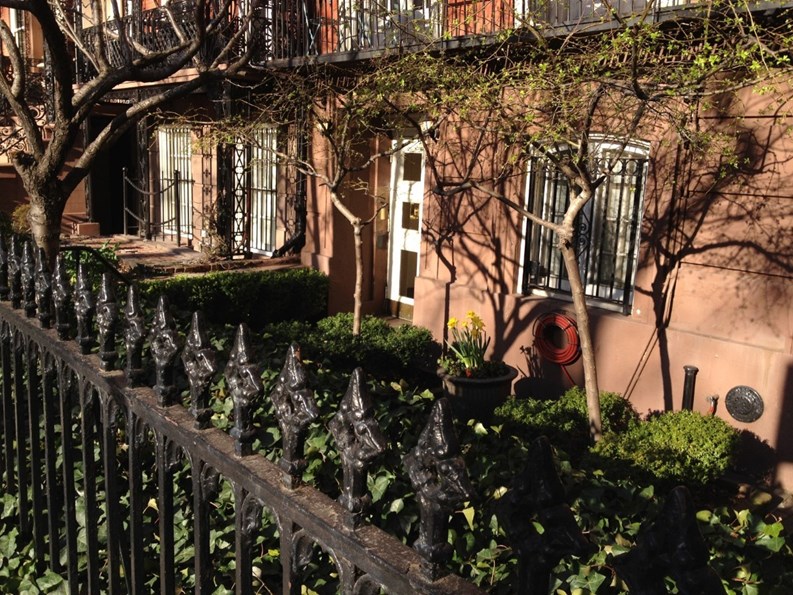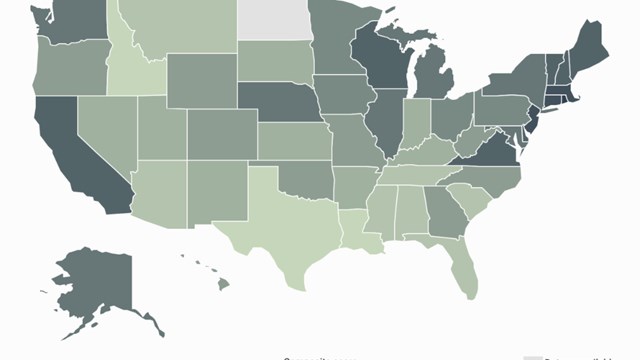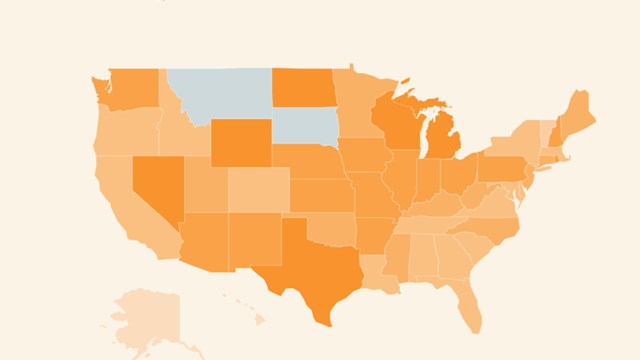When someone says 'landscaping,' the first thought that comes to mind probably isn't the front entrance of a New York City co-op or condo building, but greenery and other design elements definitely add to a building's 'curb appeal' and in a down economy, attracting buyers and increasing value for residents is a priority for any co-op or condo community.
Environmentally Sound
The benefits of having greenery outside a co-op or condo building are manifold. First, there’s the environmental aspect. New York is not to be confused with the Amazon rain forest. Although there is a significant amount of parkland, there’s also a ton of asphalt and concrete—not to mention air pollution, noise pollution, water pollution, and so on. The presence of a few nice leafy plants in front of a building may not seem like much, but they do make a difference.
Green landscaping “fights pollution. It provides oxygen,” says Bill Vecchione, owner of B&G Outdoor Rooms/Landscapes LLC in Scotch Plains, New Jersey. “It cleanses the environment in any kind of urban area. It cleanses the sulfur and other pollutants. Trees eliminate noise, and they can screen off unsightly areas.”
Ken Smith, a New York-based landscape architect, agrees. “It reduces the heat index on a building, and therefore reduces the A/C load,” he says. “And it’s a habitat for birds.”
Aesthetics, Too
Then there are the aesthetic reasons. “It helps with a sense of entrance, which makes everyone feel good, and increases property value,” says Smith.
Not sold on the “but it looks better” argument? How about if the nice visuals had other benefits as well?
“Landscaping adds value to a property. It deters crime,” says Vecchione. “When landscaping is done right, people don’t tend to destroy the property with graffiti. They stay away from places that are well-maintained because they believe they are protected by the police.”
What should a board do if a building wants to (literally) spruce up its entrance? The first step is resisting the urge to do it on the cheap and bring in an expert.
“Hire a qualified professional,” says Michael DiMezza, owner of Outside Design Build, Inc. in Brooklyn. “People don’t want to pay a landscape architect. There’s a lot of landscape designers out there. If you’re working with a top professional, they will steer you to the right choices the fastest.”
For one thing, professionals know what to buy—and where to buy it.
“There’s plenty of nurseries right here in the city, in Greenwich Village. There are also plenty in New Jersey and Connecticut,” says Vecchione.
Depending on the scale of the project, it can pay to go out of town. “We generally work with wholesale nurseries,” Smith says. “We go to upstate New York or New Jersey or even Long Island to find good plant material. Generally, there’s a price advantage to going outside of the city.”
Buy Right
But it’s also a matter of buying the proper plants—plants that will survive and thrive on the harsh streets of New York. “You need to put the right plant in the right place,” says DiMezza. “Look, we’re all guilty of going to the garden center and buying what looks nice, and not having it work out.”
The city, and New York in particular, with its tall buildings that create wind tunnels and too much shade, can be brutal to plant life. “Even shade-loving plants will not have the longevity in the city they would have in the suburbs,” DiMezza says. “It’s important for a board to understand that.”
“The Parks Department regulates trees,” Smith says. On their website, he says, is a list of recommended trees and plants, which have a history of thriving in New York.
“You want to have a mix of evergreens and perennials—evergreens have to be part of the landscaping so it looks good in the winter,” says Vecchione. “Boxwood, grasses, dwarf grasses, deciduous trees. Most of the trees in cities have to be high-headed, about six or seven feet, so you have opticals. Otherwise, people will walk into the branches.”
Then there’s the matter of spacing. “Most landscapes are overdone,” Vecchione says. “They either put plants too close together, or they overgrow.” A rule of thumb is, the planting should be done to look good a year down the line, not the day after it’s planted. Gardens, after all, take time to grow.
Feed the Soil
The soil is key. “If you don’t drink water for 30 days, you’re going to die,” he says. “It’s the same with plants.”
“You need sufficient soil,” says Smith. And the soil beneath the sidewalk is, in all likelihood, not ideal for growth.
Soil, DiMezza explains, “is not an inert mass like concrete; it’s a mixture of organic and inorganic material. Plants can’t root just anywhere. Healthy soil is key to healthy growth.” His advice is simple: “Feed the soil.”
And professionals can utilize their design to serve a larger purpose. You know when you go to Lowe’s or Home Depot, and you want to race the cart through the parking lot back to your car, but you can’t go that fast because there are potted planters in the way, and cobblestones out front? That’s designed to slow you down. Landscape architects can do the same thing with your building—create a meandering path in a garden, or alter the texture of the material out front, to slow foot traffic.
“In landscape architecture,” Vecchione says, “there’s a reason for everything.”
Just as there are many benefits to having greenery at the entrance to a co-op or condo building, there are many factors working against that greenery.
“The shade factor is huge,” he says. Indeed, the city can seem designed to blot out the light of the sun. “Plants get cold in concrete planters.”
And man’s best friend is plant’s worst enemy. “Dogs pee all over the plants. The urine is caustic, it’s high in nitrogen—it kills the plants. Dogs are a very real problem for plants in New York.”
An Urban Jungle
Then there’s the fact that even if in the best case scenario, many plants and trees simply cannot live in the city, no matter what. They key, then, is to plant what will have a chance to live—and then make sure the plants are well cared for. This means cleaning the planters, watering the plants, spreading mulch or peat moss in the spring, or whatever else the particular plant might require. Boards sometimes operate under the assumption that planting the garden is a one-time cost; while the start-up costs represent the bulk of the total pricetag, it’s important to keep some money in the budget for maintenance.
“There is no no-maintenance landscaping,” Smith says. “A co-op board needs to understand that they have to clean the planters to have healthy plants.”
The old saw about an ounce of prevention being worth a pound of cure applies here.
“Once something starts on the road to death, it’s hard to bring it back,” DiMezza says. “It’s much easier, in the long run, to have someone come every two weeks. Any one of those visits don’t seem like much at all, but over time, it makes a big difference.”
Another tip: boards can ask to get involved with the planting part of the project. “Boards have a ton of energy to do something,” says DiMezza. “Organize the board—if they want to help and get involved, pick a day for the actual planting and let them get involved.”
Landscape architects are long-range planners. They see a project as something that has an extremely long life span.
“It’s extremely expensive to do it the right way,” says Vecchione. “But if it’s done right, it’s good for a hundred years. Like Olmstead in Central Park. If you’re going to spend that kind of money, you have to make sure it’s there for years and years.”
Greg Olear is a freelance writer and a frequent contributor to The Cooperator.







Leave a Comment